The UK is comprised of thousands of islands, varying in size from tiny tidal islets that appear and disappear with the changing of the tides, to much larger, inhabited islands, such as the Isle of Wight, the Isle of Man and the Channel Islands.
Most of the islands in the UK are found off the coast of Scotland, though there are many more in Northern Ireland, Wales and England. And not all of these are coastal – the British Isles has a number of impressive lake and river islands, too.
When you consider the many vary characteristics of our islands – such as size, permanency and inhabitation – determining an overall number of islands is difficult. The amount of permanently inhabited islands sits at around 200, while figures for the number of islands altogether varies from 4,400 to 6,300.
Our guide explores some of the best islands to visit in the UK, from the seemingly innumerable Scottish Islands to some of Britain's lesser-known islands. For a visual journey to some of Britain's most idyllic islands, check out our virtual escapes series.

Best islands to visit in Scotland
Orkney

Just north-east of the Scottish mainland, you’ll find a magical group of islands that are shaped by the elements of water, air, earth and fire. With dramatic natural features, heritage, stunning coastlines and ancient treasures, this alluring archipelago of 70 isles is nothing short of enchanting.
Orkney’s waters are a popular place for marine life, with seals, porpoises, dolphins and even otters frequenting the surrounding ocean. Birdsong can always be heard, from the nesting seabirds and puffins on the Brough of Birsay to corncrakes and greylag geese over on Egilsay.
Lewis and Harris, Outer Hebrides

Despite the name, Lewis and Harris is actually Scotland’s largest single island; the northern part of the island is named Lewis while Harris forms the south.
In the south-west of Lewis you’ll find the region of Uig, a land of vast moors, high hills and violently rugged coastal scenery. Deep in the hinterland of Uig, and accessible along boggy tracks, lies a hidden collection of shielings, beehive-shaped dwellings whose origins reach back into prehistory. They are hauntingly located by a burn a mile south of Loch Morsgail and only visible when you are almost upon them.
The beaches of South Harris are the show-stoppers of the Outer Hebrides. A mesmerising array of beaches radiates from the Sound of Luskentyre with shell-sand bays, shallow lagoons formed by tidal waters and ever-changing dunes. By contrast the lesser-visited east coast, known as The Bays (Na Bàigh), is a magnificent moonscape where ice-moulded boulders burp up through the ground. Isolated crofts here are often home to excellent artists’ studios.
Bass Rock, East Lothian
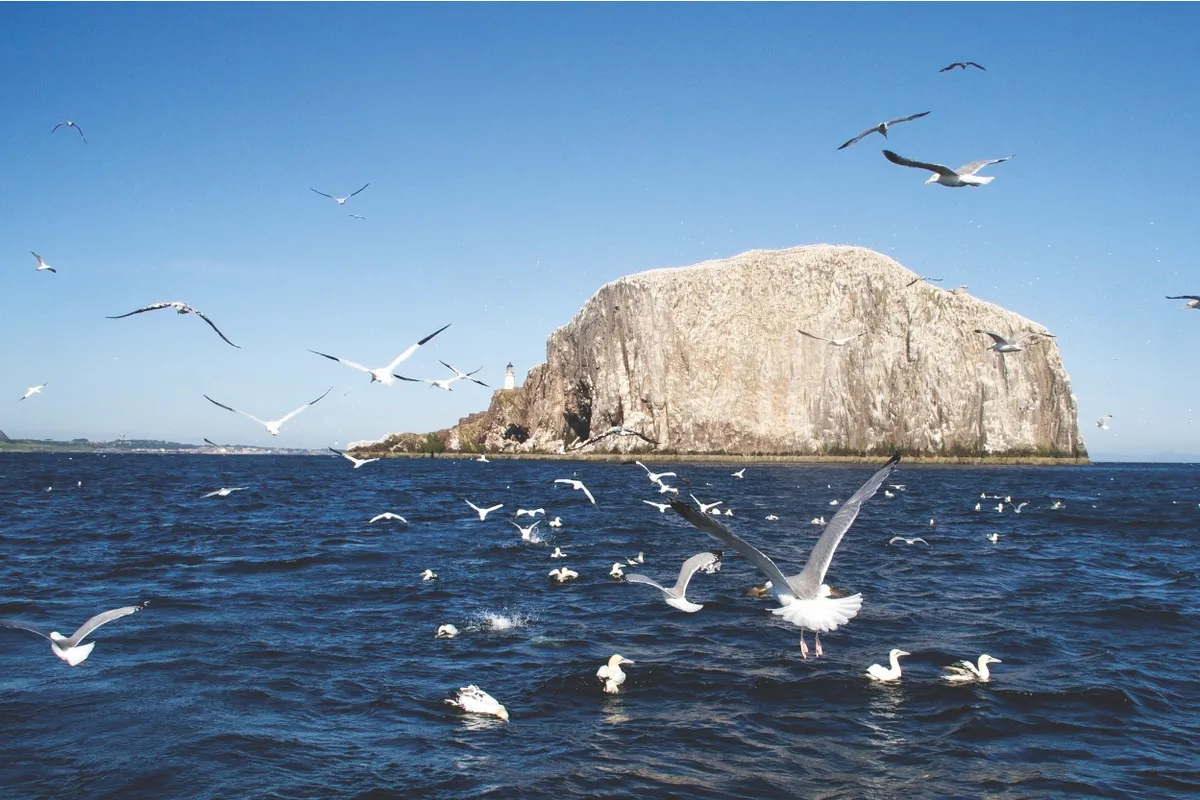
It is in late January when, after months at sea, the world’s largest northern gannet colony begins to return to Bass Rock. So copious are the seabirds that they alter the island’s complexion completely, the rock bleached brilliant white by a cocktail of snowy feathers and intoxicating guano.
Scotland is home to around a third of Europe’s seabirds, with numbers in the Firth of Forth rising to more than 500,000 in spring and summer when the gannets are joined by puffins, kittiwakes, guillemots, razorbills, fulmars and shags.
Isle of Skye, Inner Hebrides

The Isle of Skye has an attraction that is distinct from anywhere else. It’s hard to put a finger on what exactly makes the land off the north-west coast of Scotland so special. But for those in search of epic views, there’s no question that this island’s astounding, albeit sometimes foreboding, mountain ranges are a Mecca.
The largest of the Inner Hebrides has three geological faces. Mountaineers are drawn to its wildly serrated Cuillin Hills, the deeply eroded remnants of large volcanoes. Further south, the 2,800 million-year-old Lewisian gneisses on the Sleat Peninsula are among the oldest rocks in Europe.
And then there are the sea eagles, dolphins and golden eagles, the Fairy Pools and the charming seaside town of Portree.
Isle of Mull, Inner Hebrides

The second largest of the Inner Hebrides, Mull encompasses a variety of peninsulas because of its craggy coastline. Easily accessible from the mainland, there are three ports to get to Mull by ferry: Oban, Lochaline and Kilchoan.
Ben More and its neighbour Stob Binnen are instantly recognisable towering points that will test all but the most experienced walkers. Various cycling routes will take you the length and breath of Mull, and there’s plenty of history to take in as you go – the island is home to six ancient castles.
Isle of Spar, Loch Tay, Perth and Kinross

A tall silver birch waves her burnished gold leaves under a crown of Scots pine on a tiny loch island in Tayside. The colours are vivid, the strong reds of the beech trees tangling with the russet branches of the pine. And lower down, rowan, birch and lichen complete the picture-postcard scene.
The man-made Isle of Spar is best seen from the eastern shores of Loch Tay, not far from the pretty village of Kenmore. We have the early inhabitants of Scotland to thank for creating the crannog, a defensive island-based dwelling, today home to this spectacular collection of trees. It was rebuilt in 1842 prior to a visit by Queen Victoria, and the trees and walling on the island are believed to date from this period.
Handa, Sutherland

Wrapped by brutish Atlantic swells and biting winds, this remote island off the west coast of Scotland makes for harsh living. But in spring and summer, enduring these forces is one of north-west Europe’s largest seabird colonies.
Not far from the landing site, the Scottish Wildlife Trust’s visitor centre – a modest stone building, crammed with animal bones, old ID books and binoculars for hire – is the perfect starting point for a circular walk around the island.
Great Cumbrae, Ayrshire
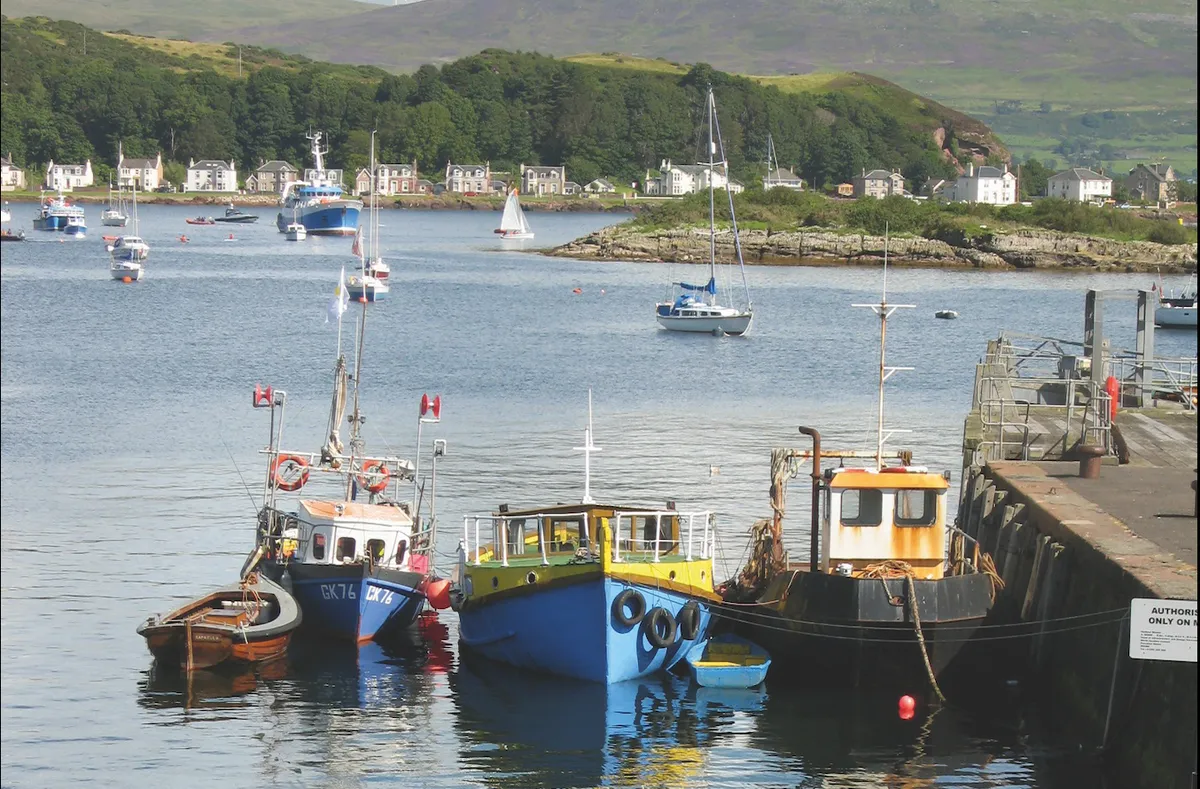
Claiming to be ‘Scotland’s most accessible island’, Great Cumbrae lies a 10-minute ferry ride from Largs, which is just an hour’s drive from Glasgow. Listen out for the calls of eiders, spot kestrels and red-breasted mergansers, and smell wild garlic on the footpath leading to the cathedral.
One of the best ways to explore the island is by bike. As family bike rides go, Great Cumbrae (also known as the Isle of Cumbrae) takes some beating. A very quiet and flat 10-mile road hugs the island’s coastline, giving both children and adults a frisson of achievement as they complete the circuit. A café a third of the way around on the island’s western shoreline and other cafés and restaurants in Millport, the island’s only settlement, further add to the appeal.
Best islands to visit in Wales
Anglesey
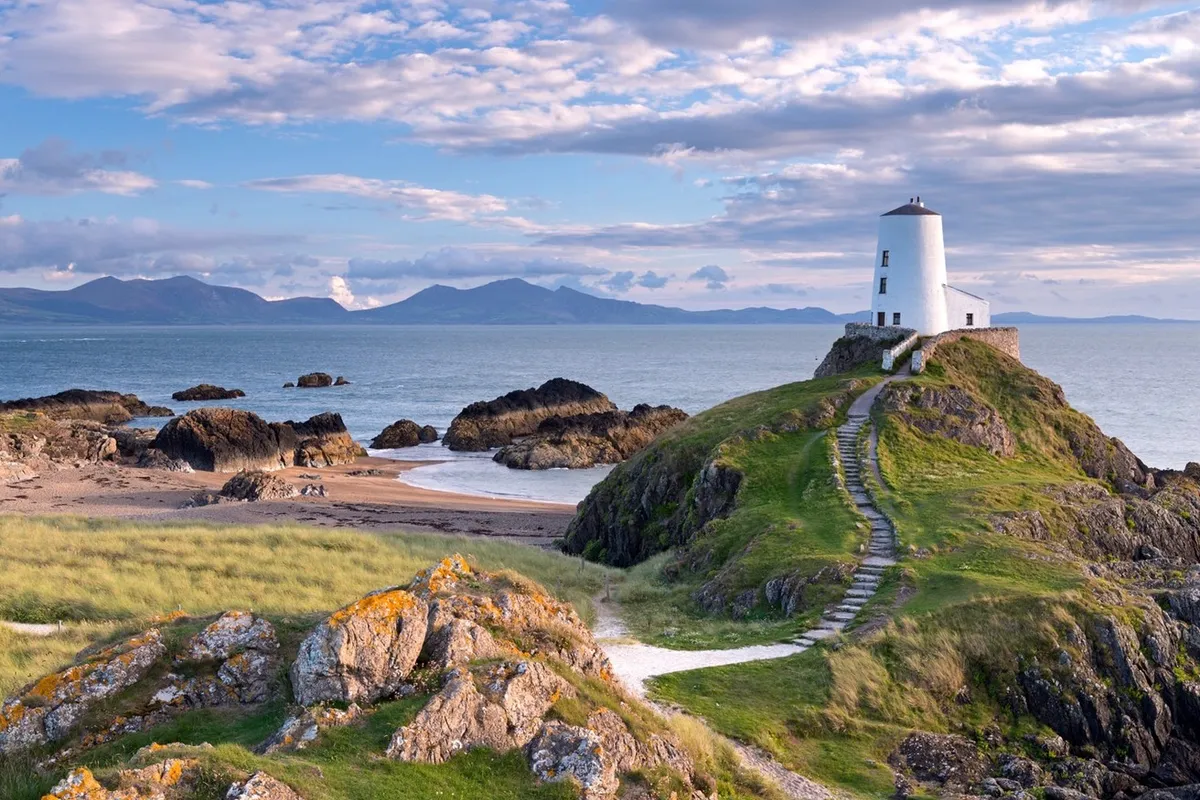
Covering an area of 276 square miles, Anglesey is the largest island in Wales. It also has the second highest island-population in Britain, yet with such a vast number of beaches, footpaths, forests and lakes, you don’t have to look far to discover your own slice of peace and solitude.
The island is peppered with magnificent standing stones, revealing striking proof of prehistoric human inhabitation, while the discovery of coins and ornaments in recent centuries exposed evidence of Iron Age and Roman activity.
Skomer, Pembrokeshire

A protected National Nature Reserve since 1959, Skomer Island is one of the most important wildlife sites in Europe. In one day you can see puffins, grey seals, rare wild flowers, stunning views and much more.
It’s a birdwatchers paradise, but if you’re still getting to grips with your guillemots and gannets, then there’s no better place to learn.
Caldey, Pembrokeshire
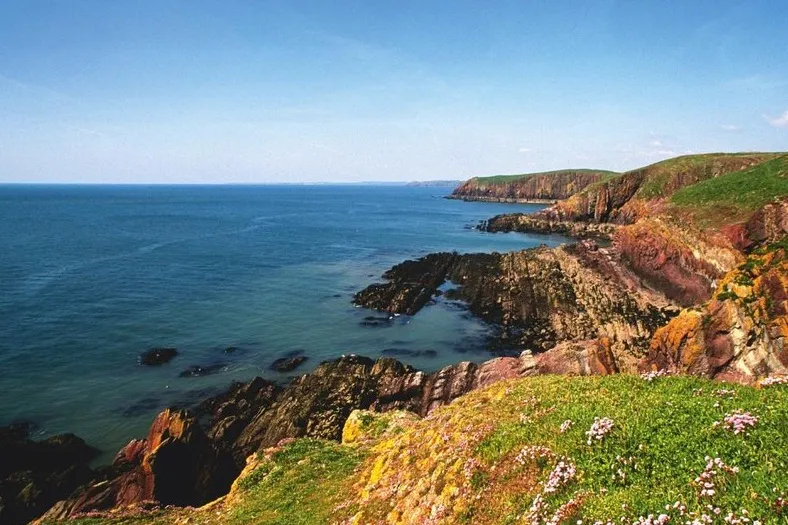
Caldey Island lies a few miles off the magnificent Pembrokeshire coast of west Wales. It is one of Britain’s Holy Islands and, today, the Cistercian order continues to observe traditions begun in the 6th century by Celtic monks.
The imposing 20th-century Arts and Craft-style white monastery, with its red-tiled roofs, perches above a village green and duck pond, surrounded by deciduous woods. Explore the trees, glades, fields and cliff tops of this peaceful island – past historic buildings and a small chocolate factory – on winding, flower-banked paths. A ferry runs daily (except Sundays and weather permitting) from Tenby harbour, Easter to October. Look out for seals as you cross the sea to Priory Bay.
Ramsey Island, Pembrokeshire

St. Justinian the hermit sought sanctuary on Ramsey Island in the 6th Century and, if it’s peaceful solitude you’re searching for, then this secluded outcrop is still the perfect place for a day’s retreat.
Ramsey lies just a mile from the St. David’s peninsula (in fact its Welsh name, Ynys Dewi, means ‘St. David’s Island’) and is one of the most spectacular of all the islands off the Pembrokeshire coast.
Best islands to visit in England
Isles of Scilly, Cornwall
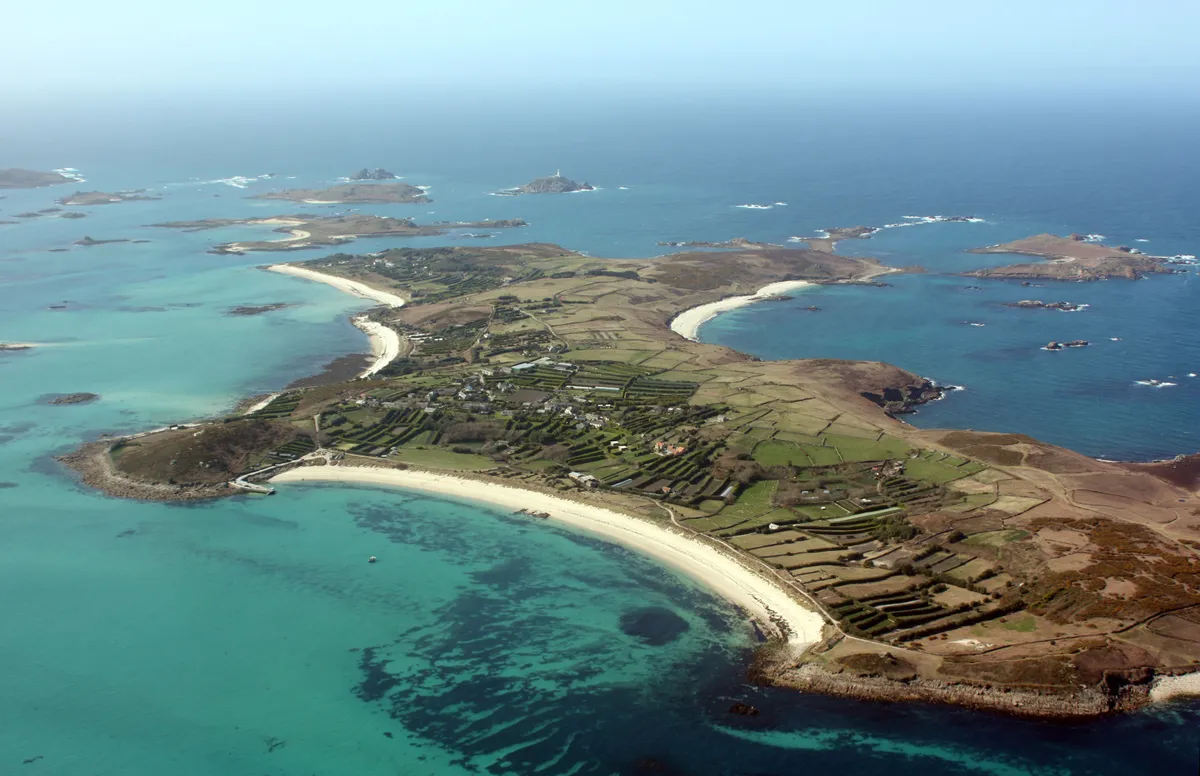
Lying only 28 miles off the south-west coast of Cornwall, the Isles of Scilly are a world apart from mainland Britain. With a sub-tropical climate and turquoise seas you could be forgiven for thinking you were in the Maldives, and in lots of ways the islands are not so different: the archipelago (one of the world’s largest, with more than 150 islands) has a wondrous array of wildlife.
Isle of Wight, England
Woody Point looking towards Ventnor, Isle of Wight/Credit: Alamy
Boasting iconic chalk downs, golden beaches, pretty towns and villages, fascinating historic sites including medieval Carisbrooke Castle and royal residence Osborne House, family friendly seaside fun and wildlife aplenty, the isle is a longstanding holiday favourite.
Plus, there are secret woodlands, kind locals, fossil-hunting beaches, and a newly opened coast path around the entire island.
Mersea, Essex
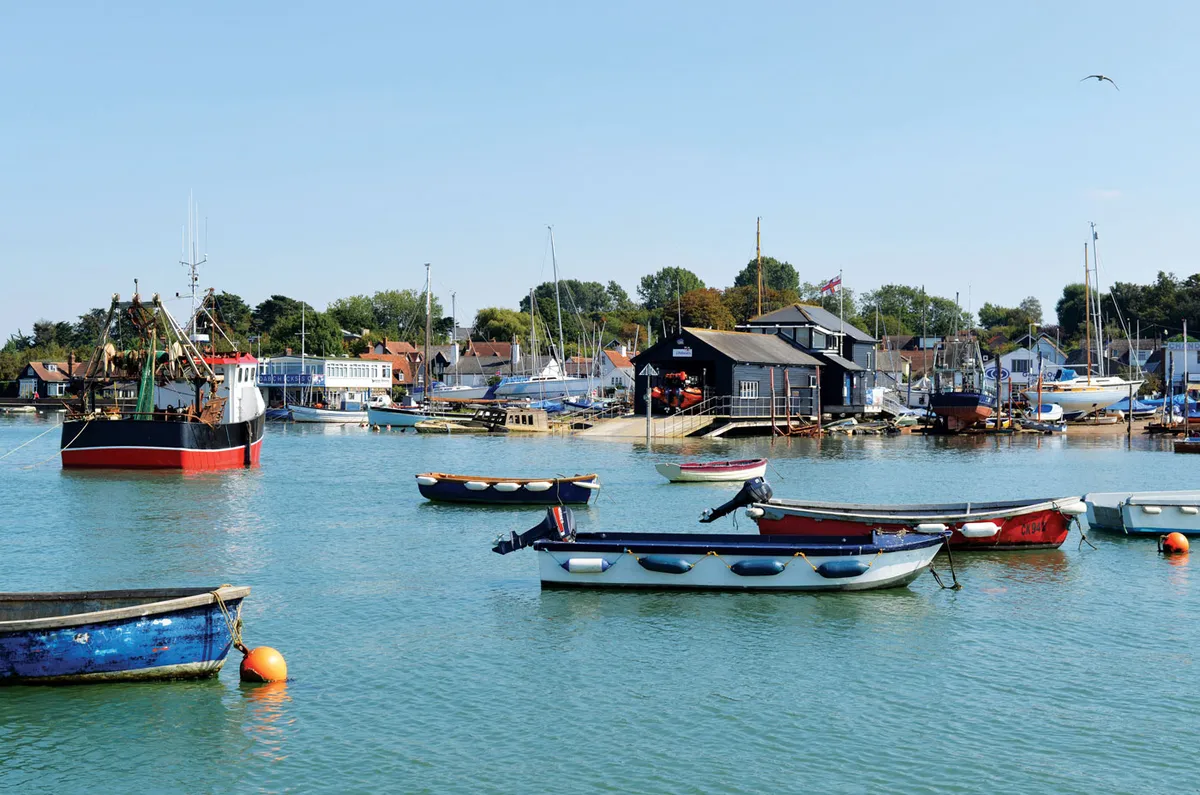
Covering roughly seven square miles, Mersea Island off the coast of Essex is the UK’s most easterly inhabited island. Evidence of a pre-Roman settlement has been found here, and legend has it that a Roman centurion haunts the Strood, the road that links the island to the mainland.
It’s a land of two halves: you’ll find restaurants and cafés in West Mersea, offering the oysters and shellfish that the island is famous for, as well as a vineyard selling locally produced wine. While East Mersea is all salt marshes and farmland, fantastic for a stiffly breezy, cobweb-clearing spring walk.
Lindisfarne, Northumberland

In 635 AD, King Oswald of Northumbria invited St Aidan from the monastic settlement on Iona to found a monastery on Lindisfarne. Aidan’s death, 16 years later, coincided with the vocation of local shepherd boy Cuthbert, who became bishop of Lindisfarne.
Through the centuries, the island suffered many Viking raids yet retained its spiritual ambience. The 12th-century priory, now in ruins, is directly related to the early monastery. The island is also an important national nature reserve and wintering site for migrating birds, including whooper swans and brent geese from Svalbard. Plants include rare black bog-rush and Lindisfarne helleborine.
Farne Islands, Northumberland
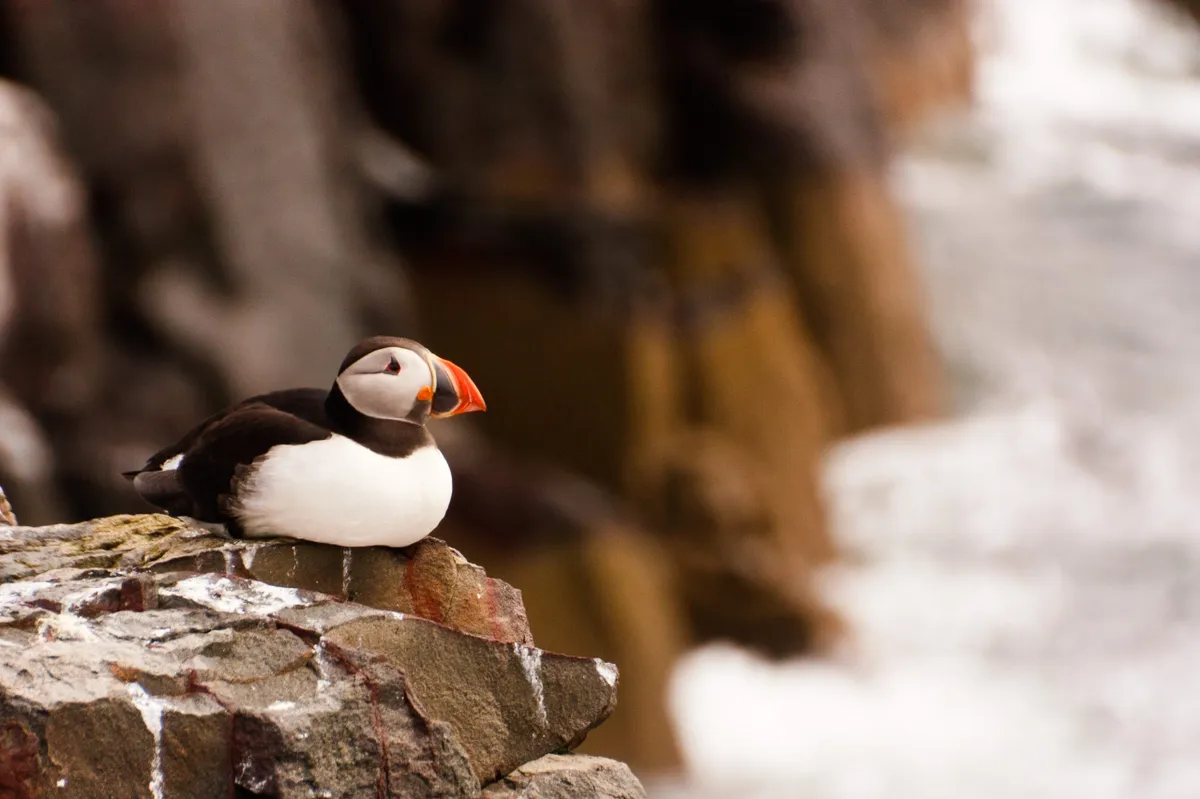
The Farne Islands are a birdie Mecca, and the great thing is that there are different birds to spot all year. In spring and autumn, Holy Island’s hedgerows are alive with migratory birds like wheaters, thrushes and warblers, and in winter the island is home to pale-bellied brent geese from Norway and other wildfowl and waders which search for food on the mud flats.
From May to July the neighbouring Farne islands and mainland cliffs resound to the cries of thousands of breeding seabirds like puffins, guillemots and little and arctic terns. You may also see atlantic or grey seals, thousands of which breed here every year.
Sark, Channel Islands

As the craggy outcrops, secret coves and steep rocky cliffs of the isle of Sark come into view, you get the sense that you’re about to embark on a wild adventure. Sitting just off the coast of Normandy in the English Channel, Sark is the second smallest of the Channel Islands, and can only be reached by boat.
A trip to Sark feels like stepping back in time. Until 2008, Sark was governed under Europe’s last remaining feudal system – a set of rules, based on Norman law, followed for more than 400 years. There are no cars or street lights (remember to pack a torch), so to get around your options are horse and cart, bicycle or boot. Tractors are the only form of motorised vehicle – the ‘toast rack’ tractor chugs up and down the steep hill, taking passengers through a leafy tunnel of trees from the little harbour to the island’s chocolate-box settlement, known simply as the The Village.
Hilbre Island, Wirral
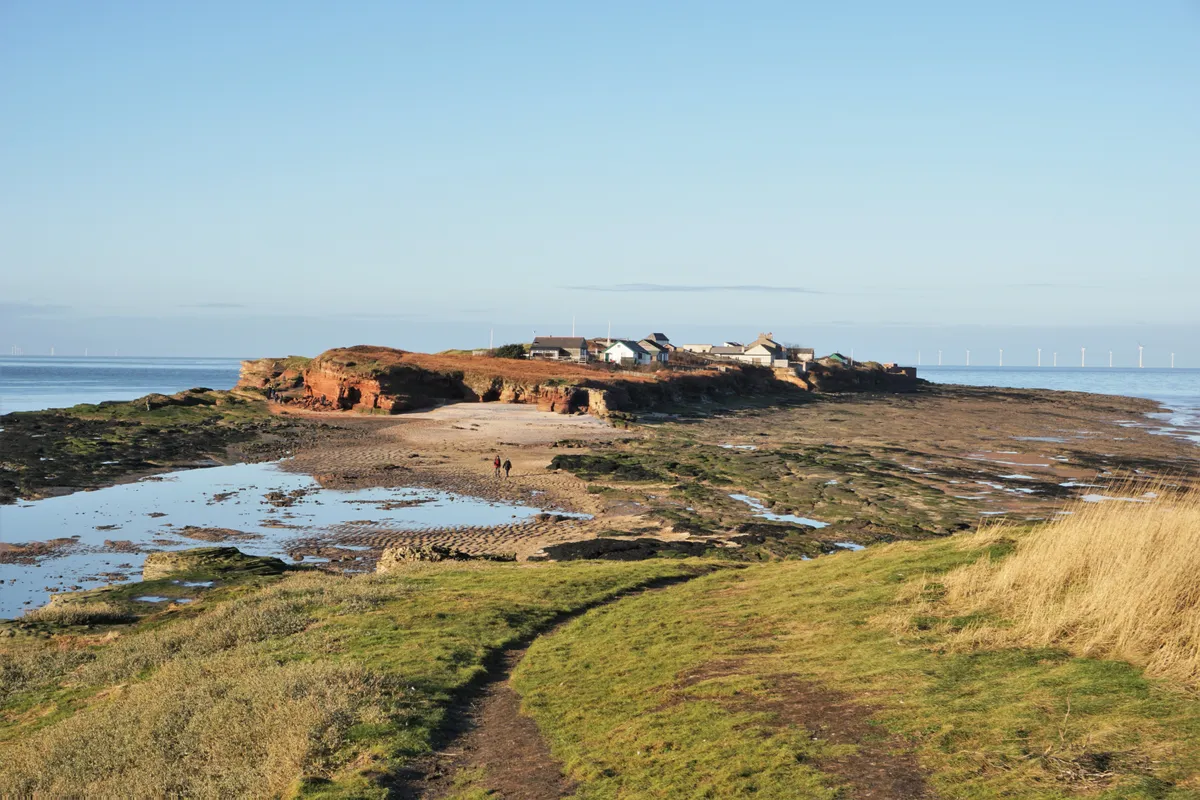
The Dee Estuary is among the top 10 sites in Europe for overwintering wildfowl, such as wigeon, teal and various species of goose. Surrounded by mudflats, marshes and sandbanks, the islands – Little Eye, Little Hilbre and Hilbre – are an important roosting site and rest point for migrating birds.
At low water, the easy walk from West Kirby to the islands, two miles offshore, takes around an hour each way, however it is essential to follow the safest route and timings posted on the Dee Lane slipway noticeboard to avoid quicksand and being cut off by the tide.
Striding out in sturdy boots to splash through shallow pools of seawater, there’s an overwhelming sense of adventure. Boats and windsurfers on West Kirby’s famous marine lake are soon left behind. The islands beckon, and the wide horizon is dominated by the magnificent mountain ranges of north Wales.
Best islands to visit in Northern Ireland
Rathlin Island, Country Antrim

You can take the ferry to Rathlin, an L-shaped wedge of moorland resting atop fortress-like cliffs with one small community clustered around the harbour. In 1306, Robert the Bruce took refuge in a cave here, following his defeat by the English at Perth. He was so inspired by the perseverance of a spider spinning its web that he returned to win the Battle of Bannockburn and the Scottish throne. Today the Manor House offers rather more comfortable accommodation, and the population of 140 is swelled by visitors who come less for refuge than the abundant bird life.
Walk along Rathlin’s western extremity where, far below, the rocky outcrops are covered by tens of thousands of puffins, razorbills and guillemots – not to mention their pungent excrement.
Inis Rath, Upper Lough Erne, County Fermanagh
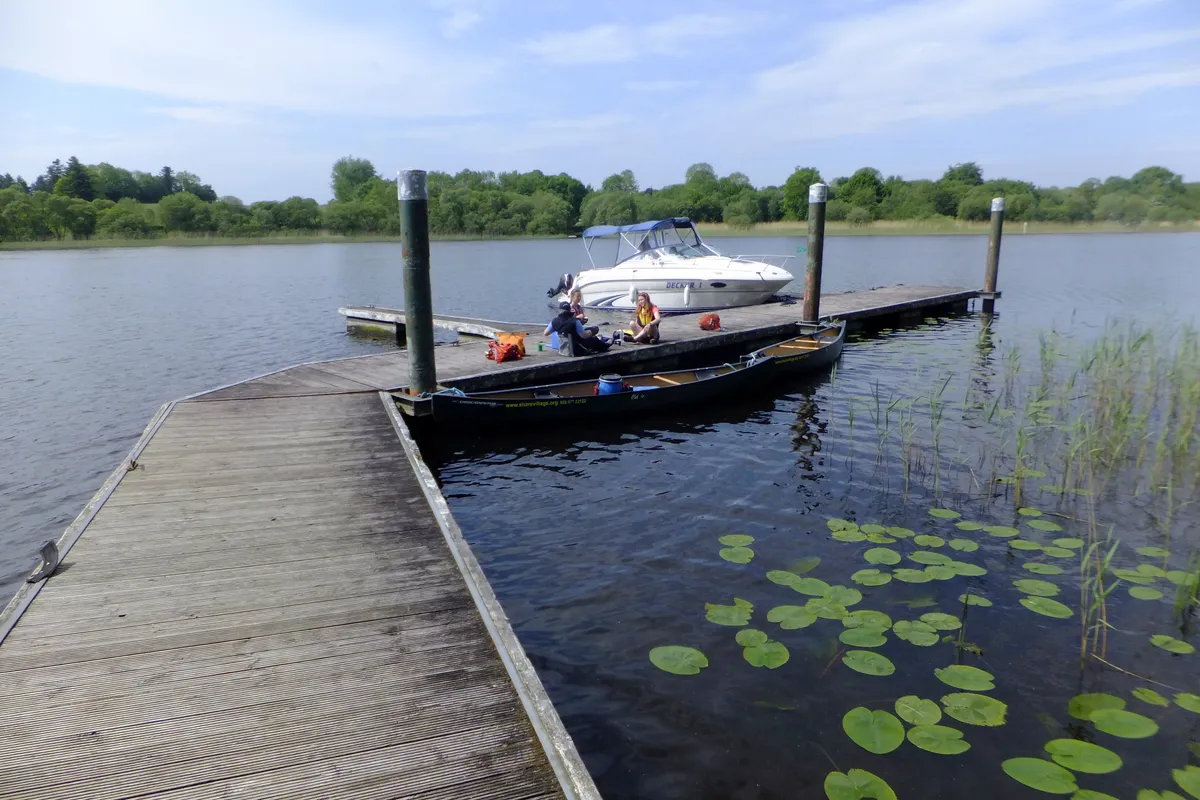
In the middle of Hare Krishna Island is a grand Victorian mansion at the head of a sweeping glade. The building was once a hunting lodge, built in 1854 by Sir Henry Cavendish Butler, but in 1982, a group of Hare Krishna monks bought the island. It is now a place of tranquillity. The exotic cry of a peacock echoes through the kitchen gardens, deer forage along the wood’s sun-warmed verges and the mansion’s west wing, now a temple devoted to Lord Krishna, sings with the heady smell of incense and the call for prayer.
The best time to visit is on Sunday when a free ferry service takes visitors to the island reserve from Geaglum Quay on Upper Lough Erne’s western shore. Time your visit with the ‘Sunday Feast’ and take part in congregational chanting, a Q&A session and a vegetarian banquet. 0286 772 3878, krishnaisland.com
Lusty Beg, Lower Lough Erne, County Fermanagh
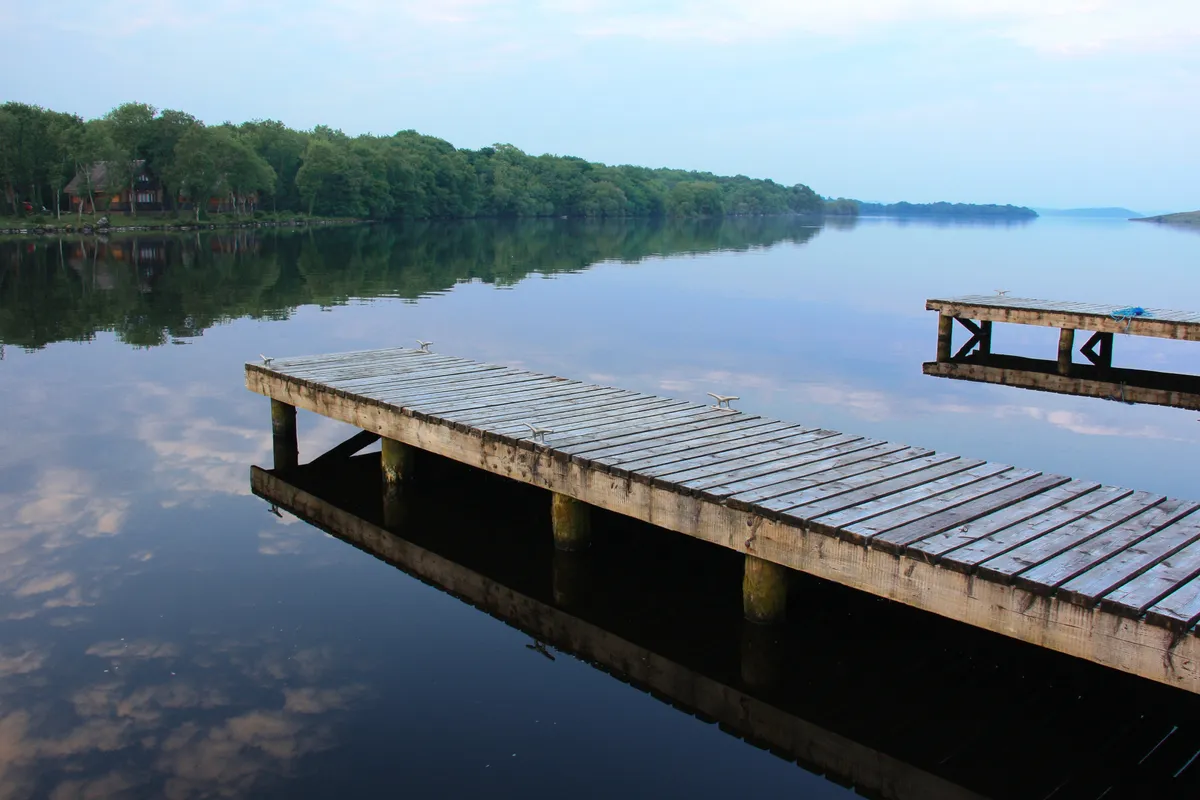
Island adventures don’t come much more magical than a trip to Lusty Beg, a tiny, wooded islet set adrift from the larger Boa Island in the north of the lakes. Book a waterside cabin or the Inish Lodge and spend the night at the rustic Island Restaurant. Discover the enchanting Fairy Trail, try your hand at archery or relax at The Island spa; from £95 for B&B for two. 028 6863 3300.
